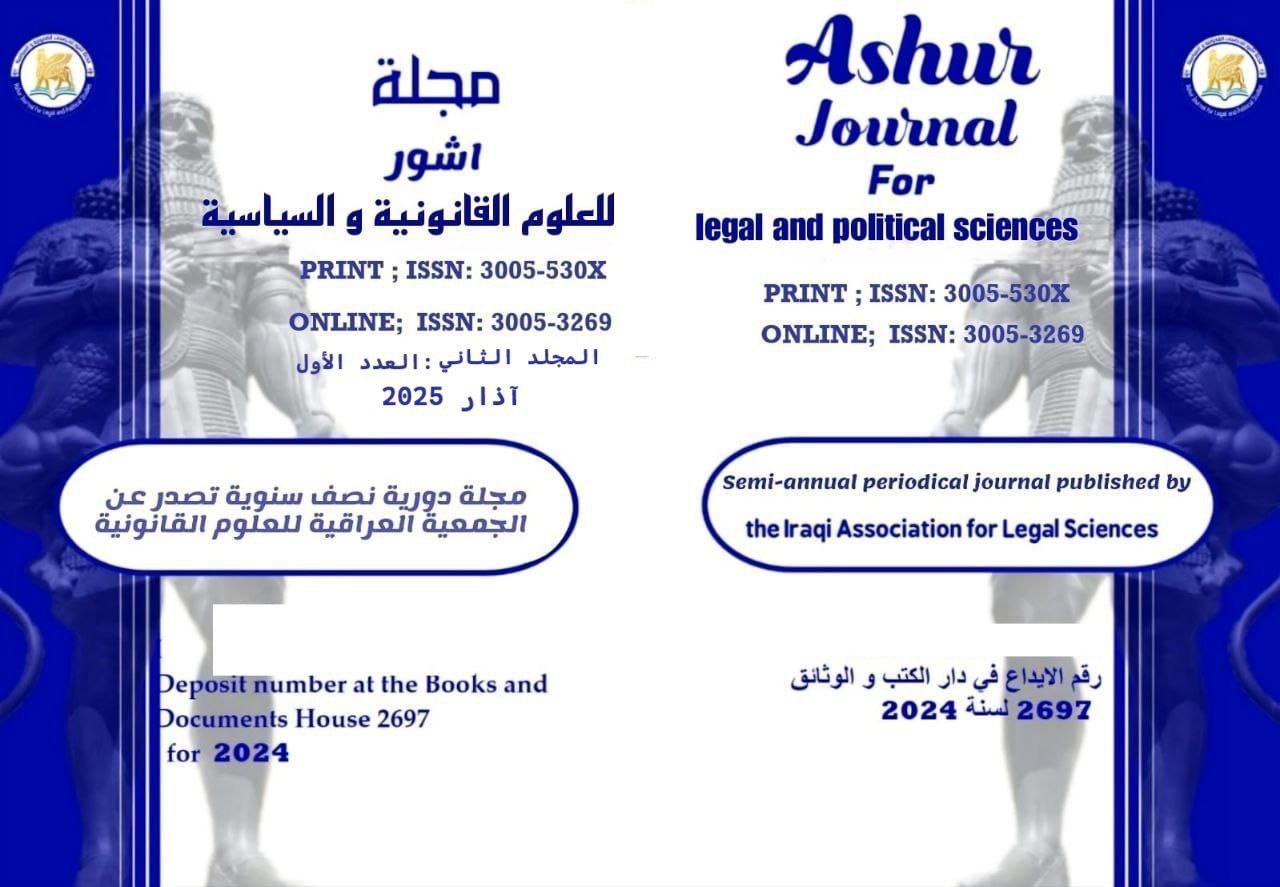Challenges arising from urban warfare
DOI:
https://doi.org/10.64184/ajlps.V2.I1.Y2025.P455-470.73Keywords:
War, Urban Areas, International Humanitarian Law, Use of Force, Rules of EngagementAbstract
Urban warfare constitutes one of the most complex forms of military conflict, as combat operations are conducted within urban environments characterized by dense infrastructure, including residential buildings, streets, tunnels, and facilities of vital importance. Such operations present significant legal and operational challenges for both civilians and armed forces, often exceeding those encountered in conventional warfare. One of the primary legal and humanitarian challenges is the high population density in urban areas, which leads to the presence of large numbers of civilians within or near combat zones. This reality complicates the rules of engagement, increases the risk of incidental civilian casualties, and contributes to widespread damage to civilian objects and infrastructure. The urban architecture further compounds operational difficulties, offering opportunities for ambushes and obstructing the maneuverability of military assets. Moreover, international humanitarian law (IHL) imposes strict limitations on the conduct of hostilities, particularly in relation to the principles of distinction, proportionality, and precaution, thereby placing considerable legal constraints on the use of force in such settings. These constraints further hinder the delivery of essential supplies, such as ammunition, medical assistance, and other logistical support, particularly under conditions of siege or extensive infrastructural damage. Psychological operations and information warfare, including the use of civilian suffering in the media, can significantly influence public opinion and affect the political objectives and legitimacy of military operations. While modern technologies—such as unmanned aerial vehicles (UAVs) and signals intelligence (SIGINT)—have become integral to contemporary warfare, their operational effectiveness is often diminished in enclosed, densely populated environments. Accordingly, urban warfare requires a high degree of operational planning, precision, and discipline, with an emphasis on minimizing collateral damage in compliance with IHL. The success of military operations in urban environments ultimately depends on the armed forces’ ability to adapt to the legal and operational complexity of the urban battlefield and to strike a delicate balance between military necessity and humanitarian obligations.
References
1. Qasim Amal and Hamaidi Aisha, Urban Warfare and Its Impact on the Effectiveness of International Humanitarian Law, a study published in the Academic Journal of Legal and Political Research, 2023, Volume 7, Issue 2, p. 1489.
2. Yaziji Amal, International Humanitarian Law and the Law of Armed Conflicts: Between Theory and Reality, Damascus Journal of Economic and Legal Sciences, Volume 20, Issue 1, 2004, p. 124.
3. Article 4/2 of the United Nations Charter.
4. Haider Kazim Abdul Ali, The Principle of Distinction between Civilians and Combatants in Light of the Provisions of International Humanitarian Law, Volume 1, Issue 22 (2013), Journal of the Islamic University College, 2013, pp. 4-6.
5. Muhammad Al-Zuhairi, International Humanitarian Law, Dar Al-Thaqafa Library, 2005, p. 152.
6. Dr. Suhail Hussein Al-Fatlawi, Principles of International Humanitarian Law, Protection of Civilians and Civilian Objects, Issam Press, Baghdad, 1990, p. 72. Dr. Salah El-Din Amer, The Distinction Between Combatants and Non-Combatants, a study published in the book (International Humanitarian Law: A Guide to National Implementation), p. 132.
7. Dr. Ahmed Moussa, International Humanitarian Law: Principles and Applications, Dar Al-Fikr Library, 2012, p. 98.
8. Dr. Mustafa El-Sayed, Foundations of International Humanitarian Law, Arab Scientific Publishing House, 2007, p. 112.
9. Dr. Ahmed Moussa, op. cit., p. 102.
10. Article 52 of the Fourth Geneva Convention states: "Civilian objects shall not be the object of attack unless they are being used for military purposes. Attacks shall be limited to military objectives, and all feasible measures shall be taken by belligerents to minimize collateral damage to civilian objects and civilians."
11. Andrew Clapham, "Human Rights and International Humanitarian Law : The Protections of Human Rights in Armed Conflicts", Oxford University Press, 2010, p88.
12. Michael N. Schmitt, "The Law of Armed Conflict: International Humanitarian Law in War", Oxford University Press, 2013, P241.
Downloads
Published
Issue
Section
License

This work is licensed under a Creative Commons Attribution 4.0 International License.
The authors retain Full copyright of their published article
Ashur Journal of Legal and Political Sciences applies the Creative Commons Attribution 4.0 International (CC BY 4.0) License to articles and other works we publish. If you submit your paper for publication by AJLPS, you agree to have the CC BY 4.0 license applied to your work.
Articles can be read and shared for under the following conditions:
BY: Attribution must be given to the original source (Attribution)
Full details available at
https://creativecommons.org/licenses/by/4.0/






